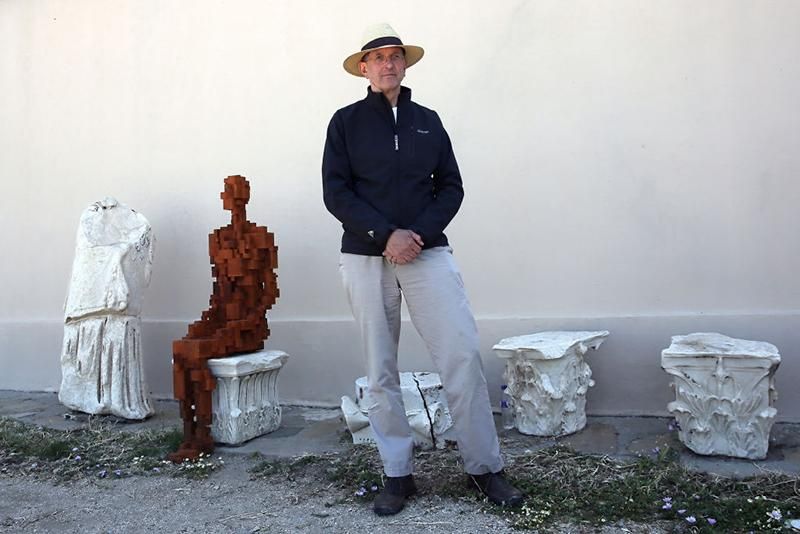The Ancient Greek Island of Delos Gets Its First Contemporary Art Installation
The esteemed British artist Antony Gormley has brought his signature “bodyforms” to the island
/https://tf-cmsv2-smithsonianmag-media.s3.amazonaws.com/filer/bc/94/bc940602-679d-4210-93f4-01cd381e856e/delos.jpg)
The tiny island of Delos offers an exceptionally rich window into the world of the ancient Greeks. Visitors can roam among the sanctuaries, theaters and opulent homes that harken back to the island's long history as a religious, political and commerical center, which thrived from around the 8th century B.C. to the days of the Romans. Today, the entire island, which measures just 1.3 square miles, is an archaeological site. But rare touches of modernism have now come to Delos. As Hakim Bishara reports for Hyperallergic, the British contemporary artist Antony Gormley has installed a series of sculptures across the island, marking the first time in 5,000 years that Delos has been home to new artworks.
Titled SIGHT, the installation features 29 of Gormley’s signature “bodyforms”—life-size sculptures that the artist largely creates based on casts of his own body. Five were commissioned specifically for the Delos installation. The sculptures can now be found perched among the site’s temples, agoras, theaters and rocky outcrops that look out onto the sea.
The Greek Archaeological Council unanimously approved Gormley’s installation, and Demetrios Athanasoulis, head of the department of antiquities in the Cyclades, tells the Guardian’s Helena Smith that he hopes SIGHT will help modern visitors engage with the ancient topography in new ways. “To be limited to the academic reading of any site’s historical significance is rather old-fashioned,” he says.
But bringing SIGHT to the history-laden island was not a simple process. Delos was sacred to the ancient Greeks, who believed it to be the birthplace of Apollo and his twin sister Artemis. During the classical period, the island served as the headquarters of the Delian League, a military alliance of ancient Greek states. After it was declared a free port in 167 B.C., Delos also blossomed as a major commercial hub. The site is now a UNESCO World Heritage Monument, and it took 18 months for Athanasoulis and his colleagues to formulate a plan for installing the sculptures in a way that would not cause damage to the archaeology.

One sculpture, for instance, was mounted on a replica of an ancient column, according to Smith. Artificial stone was added to rocks that now support Gormley’s sculptures, because “in Delos even the rocks are considered sacred,” Elina Kountouri, the installation’s co-curator and director of Neon, the arts organization that commissioned the project, tells Smith.
The elements posed another problem. When the team attempted to install a work from “Another Time,” a series of 100 bodyforms, in the sea to the north of the island, it was hit by “force-seven gales and waves of up to three or four metres,” Gormley tells Harry Seymour of the Art Newspaper.
“The foundations were bent to buggery,” the artist adds.
Gormley’s striking bodyforms have appeared everywhere from a Scottish river to the rooftops of Manhattan. Much of the artist’s work contemplates the relationship of the body to space and time—making the ancient terrain of Delos an apt setting for his latest installation. But Gormley, who won the Turner prize in 1994 and was made a knight in 2013, does not take for granted the opportunity to showcase his work in a setting that has been untouched by modern artists for thousands of years. As he tells Smith of the Guardian, the experience has been “an amazing privilege and extraordinary responsibility.”